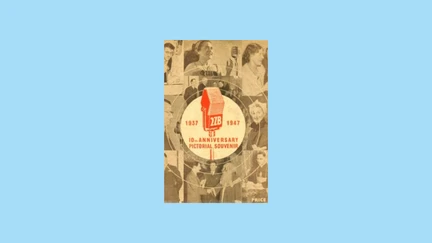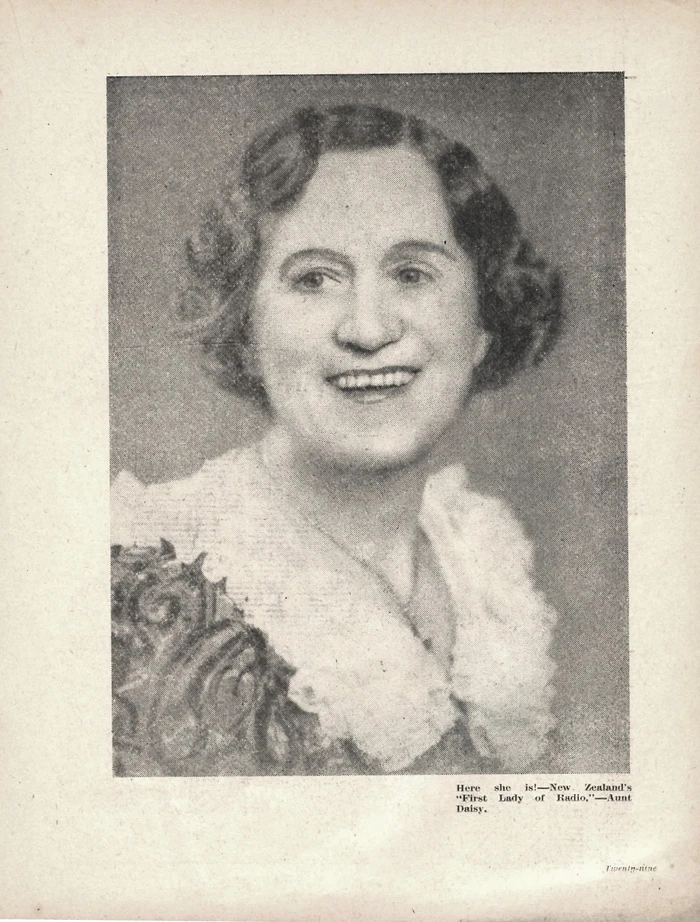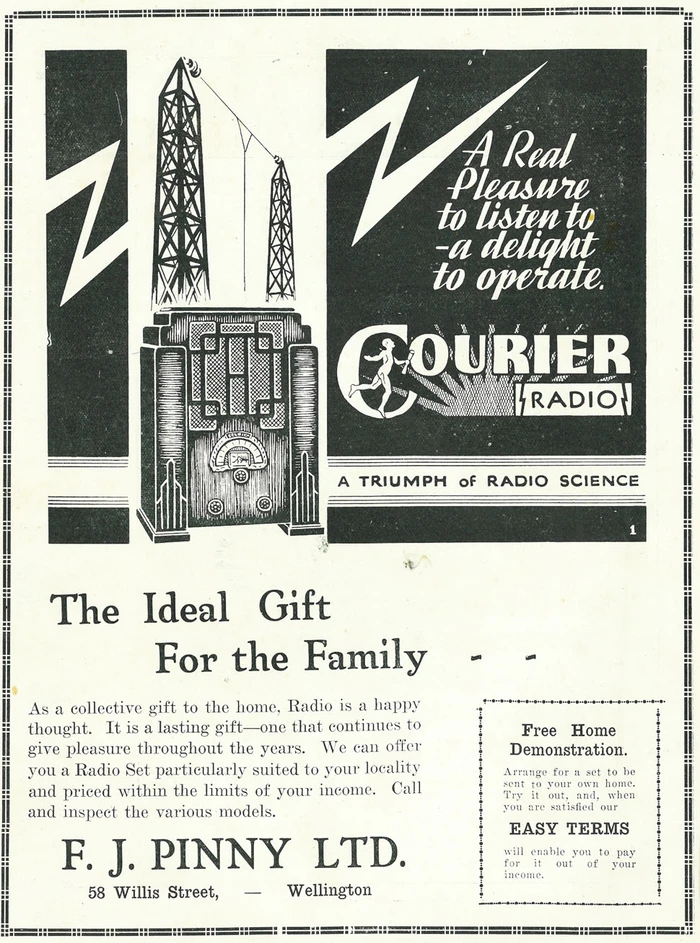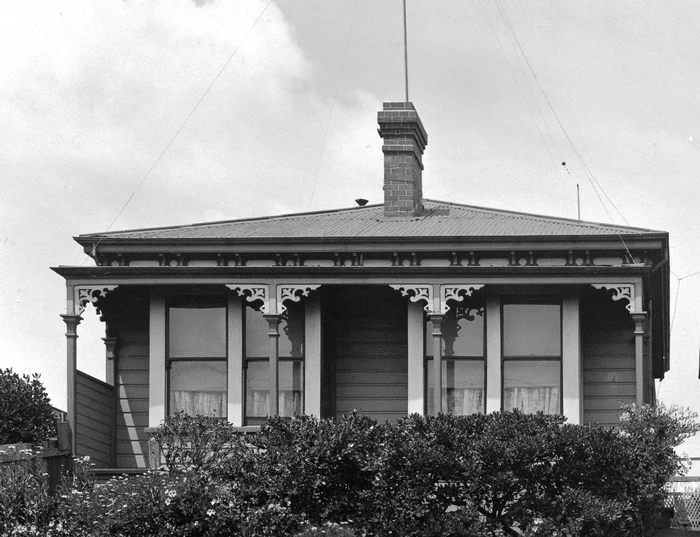2ZB and the ‘Golden Age’ of Radio
This souvenir publication, now on Wellington City Recollect, offers a nostalgic look at the ‘Golden Age’ of radio in Wellington.

It was printed to celebrate the 10th anniversary of 2ZB which began in April 1937. Broadcasting from their studios in the Hope Gibbons building on the corner of Dixon and Taranaki streets, 2ZB took advantage of the new transmission facility at Titahi Bay which had opened just months before the radio station began. Its superior location over the former principal transmission site on top of Mt Victoria meant that the entire region could pick up the 2ZB signal during the day and this range extended at night to include most of the bottom half of the North Island and the top half of the South Island. Remarkably, its second massive valve-powered AM transmitter installed in the 1940s was still in use and broadcasting on 1035 kHz from Titahi Bay into the 2000s when it was finally replaced with a modern solid-state unit. 2ZB was the first ‘commercial’ radio station in Wellington but rather than being privately owned, it operated as a branch of the National Broadcasting Service (later to become the NZ Broadcasting Corporation and then Radio New Zealand).
It proved to be extremely popular and many of its announcers (the most famous being Maud Basham, aka ‘Aunt Daisy’ aka the ‘First Lady of Radio’) were feted as major celebrities by the public. Companies flocked to advertise on the radio station and it became very profitable for the NBS. Before the advent of reliable recording technology, advertisements were often performed live in separate studios and many Wellington actors began or supplemented their careers voicing advertisements in the form of short skits.

The 'First Lady of Radio', Aunt Daisy was one of New Zealand's best known and most popular celebrities over a broadcasting career that lasted more than three decades
Though they were expensive items, a radio became the appliance that every family wanted to own and in many cases they would have been regarded as the most valuable item in the household. In the mid-late 1930s, a basic five-valve shelf or ‘mantle’ radio would have cost about £10 (about $1000 today) but a ‘luxury’ floor-standing model with seven or more valves, shortwave reception, hand-crafted woodwork and superior sound quality could easily cost £20 or even £30 for an imported English model. Radio manufacturing became a significant local industry with a number of factories based around the Courtenay Place area and specialist radio retailers and repair shops became ubiquitous throughout the city and suburbs.

Radios opened the world to many listeners with broadcasting filing the same role that the internet does today
Self-installed long-wire aerials were a common sight on Wellington houses and in their backyards. These greatly improved the reception of local stations but were essential for listening to shortwave broadcasts at a time when stations like the BBC and Radio Australia were some of the few reliable sources of international news available during a period when overseas news coverage in daily newspapers was limited.

A long-line radio aerial above a house in Luxford Street, Berhampore, 1929
2ZB continued to be the most popular radio station in Wellington for decades but it was an end of an era in 1993 when the original call sign was dropped as the station’s name and was replaced with ‘Newstalk ZB’. In 1996 the NZ Government sold off Radio New Zealand’s commercial stations and Newstalk ZB came under the ownership of the Australian-owned conglomerate, The Radio Network which in turn became New Zealand Media and Entertainment Ltd in 2014 (better known today as ‘NZME’). Though it can now also be heard on FM and online, the station continues to provide an AM transmission on 1035 kHz frequency, slightly offset in the 1970s from 1120 kHz that it began broadcasting on over 80 years ago.
View the 2ZB 10th Anniversary Publication from 1947 on Wellington City Recollect